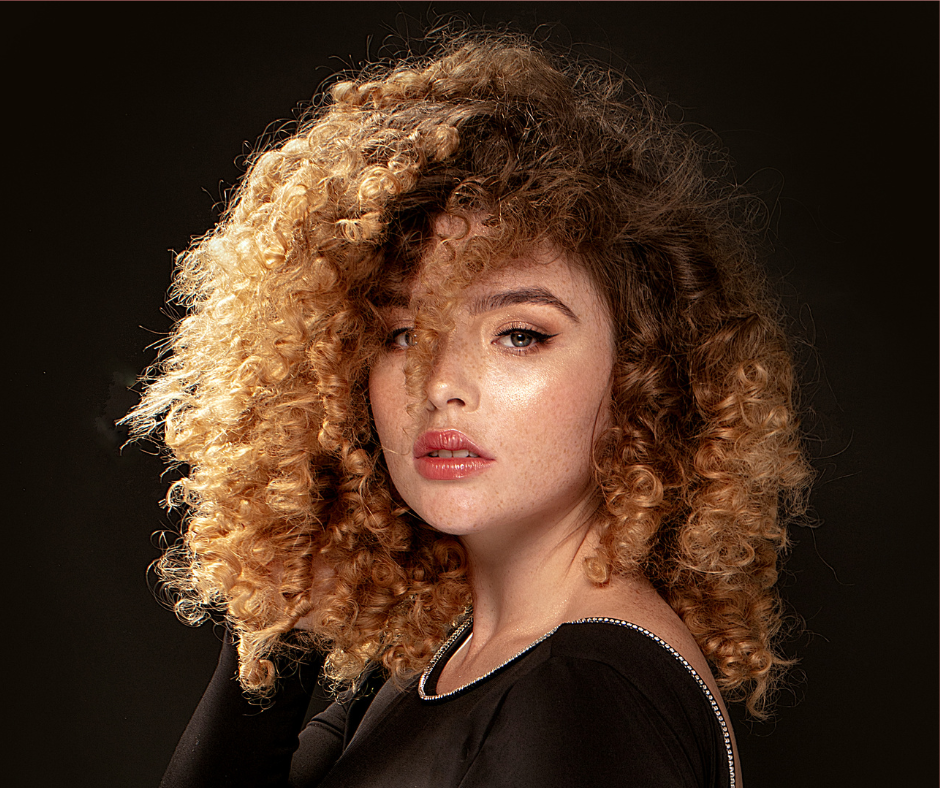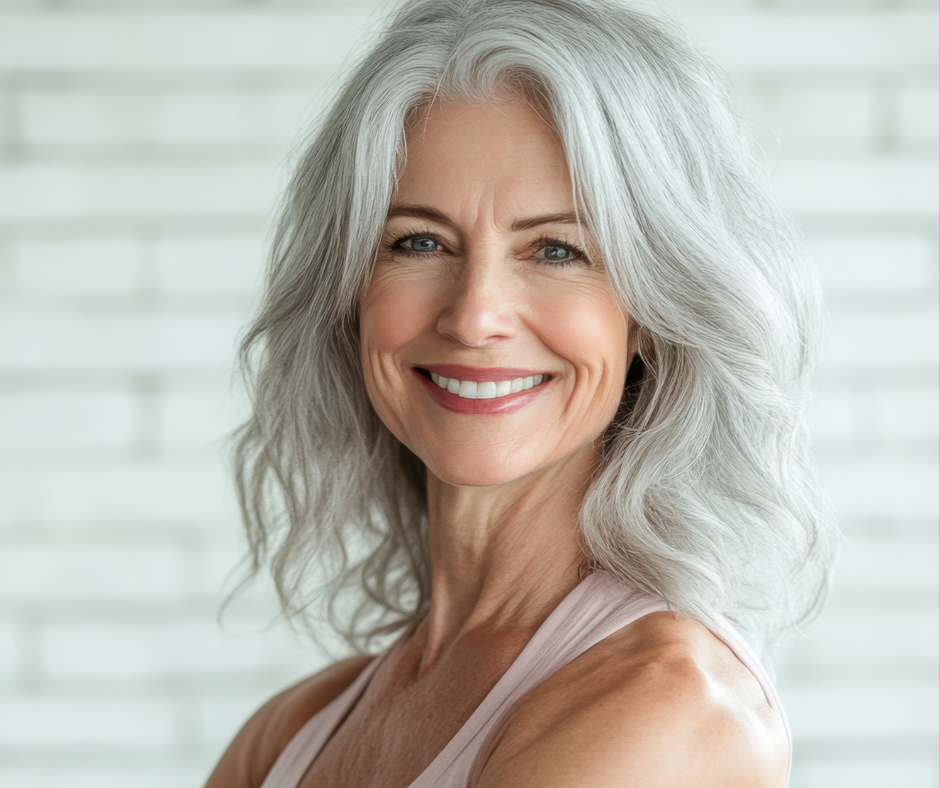There’s so much information floating around in the curly hair world that it can be hard to gauge what’s true and what’s not - especially because everyone's curls are different.
If you're transitioning or simply trying to give your curls the best care possible, getting the facts straight is key to a healthy, stress-free hair journey.
So, let’s debunk a few myths and spill some truths:
1. Myth: Having Curly Hair is a Problem
It’s totally understandable to think this way—sometimes it can feel like a love-hate relationship with your curls. But is having curly hair actually a problem? Absolutely not!
Why? Because when you start to show your curls a bit of love, they’ll reflect that right back. That means investing in the right products, experimenting with styling techniques, sticking to a routine that works for you, and most importantly, prioritizing the health of your hair over just how it looks.
2. Myth: Silicones Are Bad for Curly Hair
Nope, not all silicones are bad for curly hair. This is one of those cases where a few things give the whole group a bad name. Silicones actually fall into different categories.
Some silicones are water-soluble and can be rinsed out easily, while the more stubborn ones can usually be removed with most surfactants—or, at most, a clarifying shampoo like the Ouidad Water Works Clarifying Shampoo, No. 4C Bond Maintenance Clarifying Shampoo by Olaplex, Gentle Clarifying Shampoo from Bounce Curl, or Triple Threat Detox Shampoo from Original Moxie. Some clarifying shampoos are stronger than others, and some silicones require the strongest cleansers to get them off. If you have questions about this, feel free to ask us!
Silicones can offer some pretty amazing benefits that your hair might actually thrive on. So make sure you’re not skipping out on great products just out of fear, or swapping out products that are working for you for something else just because someone told you silicones are bad.

3. Myth: All Sulfate Shampoos Are Clarifying Shampoos
Just because a shampoo contains sulfates doesn’t automatically make it a clarifying shampoo. Sulfate shampoos often strip your hair of necessary moisture and oils, making curls dryer than they were to begin with. This is why many curlies avoid sulfates.
Clarifying shampoos are like a reset button for your hair, removing product build up without harsh sulfates. Formulation matters! The ingredient considered "clarifying" by the Curly Girl Method community is sodium olefin sulfonate, which is not a sulfate.
Some curlies will use a sulfate shampoo periodically to really deep clean their hair. There's no problem with this, especially if you're prone to build up. Just be aware that sulfates are a lot stronger than most of the products the curl community considers clarifying.
There are also chelating (pronounced "key-late-ing") shampoos, which take things a step further. They’re designed to remove mineral buildup, which is especially important if you live in a hard water area or spend a lot of time in the water. Pool chemicals can have an effect too, so it’s important to get all of that off your hair.
A great option for hard water buildup? The Malibu C Hard Water Wellness Shampoo which is both clarifying and chelating.
4. Myth: Shampoo Is Bad For Curly Hair

This idea likely comes from the fact that shampooing can strip away natural oils and sebum from the hair, leading to dryness. And while that can be discouraging, skipping shampoo altogether is not good for your curls. That’s because you need to get rid of dirt and product buildup, especially on our scalp. If not, your hair can become weighed down, greasy and dull, and your scalp can become irritated.
Cleansing your scalp and hair is like allowing your scalp to breathe and letting your hair’s cuticles fully and easily absorb product or moisture.
For your washday lineup, choose to wash with a moisturizing shampoo specifically formulated for curls.
Some great options include:
And when you go about shampooing your hair the right way, you should have no problem!
5. Myth: Damaged Hair Can Be Low Porosity
If your hair has been damaged from frequent heat styling, bleaching, or chemical treatments, it’s very likely not low porosity. In fact, damaged hair usually becomes high porosity or behaves like high porosity hair.
Think of your hair when it’s natural as a clean and untouched state: the cuticle lies flat and resists absorbing moisture. That’s what we call low porosity. But once damage is introduced, the cuticle gets roughened and starts to lift, making it easier for moisture to enter but harder to retain. That’s a sign of high porosity. Caring for these two different porosities require different steps in your wash day routine.
So if your naturally low porosity hair has been through a lot or is now colour-treated, chances are it is high porosity and should be treated that way instead.
6. Myth: I Don’t Have Curly Hair, Just Frizz
This might just be a little bit of denial! Curly hair and frizz often go hand in hand. If your hair has always been frizzy, especially if it tends to puff up in humid weather, chances are, you’re one of us. And it’s time to own it!
Try a simple curl routine to bring those hidden curls to life. Start with a good leave-in conditioner and follow up with a solid gel like:
Medium and strong hold gels like the ones listed above help lock frizzy strands down and maintain curl definition. Also be sure to do regular deep conditioning treatments - frizz is frequently a sign of dehydrated or under-moisturized curls.
A great cut by an experienced stylist can also help bring out the best in your curls by giving your hair shape to encourage curl formation and add bounce.
7. Myth: You Can Repair Damaged Hair
Your hair is dead. Only your scalp and hair follicles are alive. That means damaged hair can’t truly be repaired, since it’s not living tissue and can’t heal itself.
What you can do is moisturize it, coat it with nourishing products, and help it look and feel better. But underneath it all, the damage remains until it grows out and gets trimmed off.
Healthy hair starts at the root. By caring for your scalp, follicles, and overall health, you’re setting the stage for stronger, healthier growth. From there, it’s all about maintaining and protecting your strands to prevent future damage and minimizing the effects of the damage you're already dealing with.
8. Myth: Heat Does Not Damage Curly Hair

If you choose to use heat on your hair, just be aware that it can damage your cuticle. It’s basic science: hair is made up of a protein called keratin, and heat can easily denature proteins, meaning it changes their structure. That’s what leads to heat damage.
The best compromise you can make is to never skip a heat protectant. These products can offer protection up to 230°C (450°F), creating a barrier between your curls and the heat. When applying a heat protectant, take your time and work in sections to make sure every strand is covered. You don’t want any curls missing out.
A few heat protectants I’d recommend any day are the AG Hair Deflect Fast and Dry Heat Protectant, Bouclème Curl Defence Spray, and Curlsmith Miracle Shield Protectant Spray.
Diffusing is not as damaging to your hair as using a flat iron and directly applying very high heat to your strands, but it is still best done on low or cool settings to minimize the impact on your cuticle. If you regularly diffuse on high heat, be sure to use a heat protectant.
9. Myth: You Should Purchase Products Based on Your Curl Type
This is what you’d call a bad idea. If you're focusing too much on your curl type and buying products just because they’re marketed for 3A, 3B, or 4C hair, you’re likely going about it the wrong way.
Curl type can change over time, and you might even have a mix of curl types across your head. This can be due to genetics, aging, neglecting certain areas, hair damage, medical conditions, or other factors.
Instead of shopping based on curl type, focus on your hair’s characteristics. Look at things like porosity, density, how damaged your hair is, and your overall hair goals. That’s the best way to find products that will actually work for you.
We're always here to help guide you on product choices. Get in touch with us online or visit us in store for personalized recommendations.
10. Myth: It Takes Too Much Time to Care for Curly Hair!
You can make your curly hair routine as simple or as detailed as you want. The key is understanding what your hair actually needs. Once you know that and steer clear of certain unhelpful habits, you’ll find that your routine can have fewer steps, take less time, and still deliver healthy, defined curls.
If you need help figuring out your hair or want product recommendations to suit your curl goals, send us an email at products@curlwarehouse.com or stop by our store!








